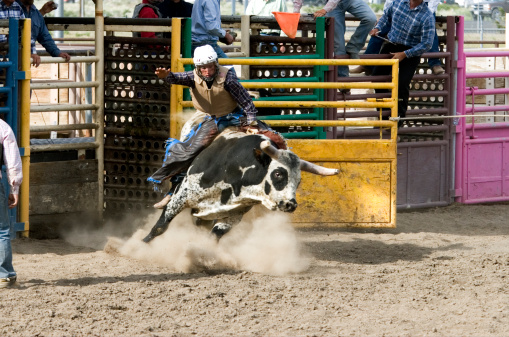General Rules of Sports Car Racing
Have you ever wondered what separates the seasoned sports car racers from the amateurs? Understanding the general rules of sports car racing is crucial for anyone looking to navigate the complexities of this high-speed sport. From safety gear requirements to race etiquette and sportsmanship, there are numerous factors that come into play when competing on the track. So, whether you're a seasoned pro or just starting out, it's essential to grasp the fundamental principles that govern sports car racing to ensure a safe and fair competition.
Safety Gear Requirements
When gearing up for sports car racing, make sure you have all the essential safety gear required to protect yourself on the track. Your helmet safety is paramount in ensuring your well-being during high-speed races. Invest in a quality helmet that fits snugly and meets safety standards to shield your head from potential impacts. Remember, your life may depend on the reliability of your helmet.
In addition to a reliable helmet, don't overlook the importance of driving gloves. These gloves not only provide you with a better grip on the steering wheel but also protect your hands in case of sudden maneuvers or accidents. Look for gloves that are comfortable, breathable, and offer sufficient grip to enhance your driving performance.
Safety gear is not just a formality but a crucial aspect of your racing experience. By prioritizing helmet safety and driving gloves, you are taking proactive steps to safeguard yourself on the track and maximize your potential as a sports car racer.
Race Car Specifications
Alright, let's talk about the heart of any race car – the engine power requirements. Without the right amount of power under the hood, your car won't be able to keep up with the competition. Weight distribution is key in ensuring your car handles corners like a dream, giving you that competitive edge. And never underestimate the impact of aerodynamics on speed; a well-designed aerodynamic setup can significantly enhance your car's performance on the track.
Engine Power Requirements
Engine power requirements in sports car racing are critical factors that heavily influence race car specifications. When it comes to powering through the tracks, there are key elements to consider:
- Horsepower: The raw power generated by the engine.
- Torque: The twisting force that propels the car forward.
- Engine Displacement: The total volume of air and fuel an engine can burn.
- Power-to-weight Ratio: How much power the engine produces relative to the car's weight.
- Rev Range: The range of engine speeds where peak power is produced.
Understanding these aspects is crucial for optimizing performance, enhancing speed, and dominating the competition on the racetrack.
Weight Distribution Importance
Understanding the importance of weight distribution in race car specifications is crucial for achieving optimal performance on the track. When it comes to cornering techniques, weight distribution plays a significant role in how the car handles turns. Proper weight distribution allows for better balance, enhancing the car's grip and stability through corners. Additionally, when considering suspension setup, weight distribution is key to ensuring that the car maintains traction and responds predictably to driver input. By fine-tuning weight distribution, you can improve the overall handling characteristics of the car, making it more responsive and agile on the track. Remember, a well-balanced weight distribution not only enhances performance but also gives you the freedom to push the car to its limits with confidence.
Aerodynamics for Speed
When it comes to maximizing speed and performance on the racetrack, mastering aerodynamics in race car specifications is absolutely essential. Understanding how to manipulate airflow around the vehicle can significantly impact your racing success. Here are some key aspects to consider:
- Drag Reduction: Streamlining the car's body to minimize air resistance.
- Cornering Speed: Utilizing aerodynamic features to enhance grip and stability while cornering.
- Wind Tunnel Testing: Fine-tuning the car's aerodynamics in controlled conditions.
- Downforce Optimization: Increasing downward pressure on the car to improve traction and grip.
- Aerodynamic Efficiency: Balancing drag reduction with downforce to achieve the best overall performance on the track.
Driver Eligibility Criteria
You've got your eyes set on the race track, but before you rev up that engine, remember the crucial POINTS of driver eligibility criteria. Age requirements and racing experience are just the tip of the iceberg when it comes to qualifying to compete in sports car racing. Stay tuned to learn more about what it takes to make your mark on the track!
Age Requirements
To participate in sports car racing, drivers must meet specific age requirements outlined in the driver eligibility criteria. Age is crucial in ensuring both skill development and safety precautions are met. When considering age requirements for sports car racing, keep the following in mind:
- Young Talent: Embrace the energy and enthusiasm of young drivers.
- Experience Matters: Older drivers bring wisdom and expertise to the track.
- Balancing Act: Striking a balance between youth and experience is key for a diverse field.
- Learning Curve: Younger drivers have a steep learning curve but can adapt quickly.
- Seasoned Pros: Older drivers often serve as mentors, enriching the racing community with their knowledge.
Racing Experience Needed
Delving into sports car racing necessitates a foundation of substantial racing experience as per the driver eligibility criteria. Before advancing to sports car racing, it's essential to familiarize yourself with beginner classes to hone your skills and gain valuable track time. These classes provide a safe environment for drivers to learn the basics, understand racing techniques, and gradually progress towards more competitive levels. Mastering racing techniques such as cornering, braking, and overtaking is crucial for success in sports car racing. Building a solid racing experience not only enhances your performance on the track but also ensures the safety of yourself and others. Embrace the journey of learning and growing as a racer, starting from the fundamentals and working your way up to the exhilarating world of sports car racing.
Track Regulations
When navigating the track in a sports car race, it is crucial to adhere to the specific regulations set forth to ensure a fair and safe competition. As you hit the corners and accelerate down the straights, keep these track regulations in mind for an exhilarating and successful race:
- Respect Track Boundaries: Stay within the defined limits of the track to maintain fairness and safety for all drivers.
- Master Cornering Techniques: Perfect your apex approach and exit strategy to maximize speed without compromising control.
- Mind Your Racing Line: Stick to the optimal path on the track to shave off valuable seconds and gain a competitive edge.
- Watch for Track Flags: Stay aware of flag signals to anticipate track conditions and adjust your driving accordingly.
- Avoid Blocking: Be mindful of faster cars trying to overtake you and make room for a smooth pass without impeding their progress.
Pit Stop Protocols
Navigating the pit stop with precision and efficiency is crucial for maintaining your competitive edge in sports car racing. When it comes to pit stop protocols, two key elements require your utmost attention: fuel management and tire strategy. Managing fuel consumption during a race is a delicate balance between maintaining optimal performance and avoiding running out of fuel. Pit stops provide the opportunity to refuel swiftly without losing precious time on the track. Understanding your car's fuel efficiency and planning pit stops accordingly can make all the difference in your race strategy.
Equally important is tire strategy. Pit stops are the perfect moment to change tires, ensuring optimal grip and performance for the remainder of the race. Tire selection and maintenance can impact your speed and control on the track, making it essential to have a well-thought-out tire strategy before entering the pit lane. By efficiently managing fuel and strategically planning tire changes, you can maximize your performance and stay ahead of the competition.
Flag Signals Meaning
Understanding the meaning behind flag signals is crucial for sports car racers to communicate effectively and stay safe on the track. Flag signals convey vital information about track conditions, communicate signals, and ensure team coordination. Here are five essential flag signals you must know:
- Green Flag: Signals the start or resumption of racing.
- Yellow Flag: Indicates danger ahead, requiring drivers to slow down and be cautious.
- Red Flag: Halts the race due to an incident or unsafe track conditions.
- Blue Flag: Informs a driver that a faster car is approaching to lap them.
- Checkered Flag: Marks the end of the race.
In the high-stakes world of sports car racing, these signals are the language of the track, guiding you through cornering techniques and helping you navigate changing track conditions. Mastering these flags fosters effective communication and seamless team coordination, ensuring a thrilling and safe racing experience.
Overtaking Rules
As you race through the track, mastering the overtaking rules becomes essential for navigating tight corners and maximizing your speed. Overtaking techniques are crucial for gaining positions without compromising safety. Fair play is at the core of these rules, ensuring that overtaking is done cleanly and respectfully. When executing an overtake, it's vital to understand defensive driving as well. Anticipating your opponent's moves and strategizing your approach can give you the upper hand in a close battle.
Defensive driving is not just about blocking opponents but also about smartly positioning your car to defend your position while leaving room for fair competition. The evolution of racing strategies has made overtaking a dynamic aspect of sports car racing, where drivers need to adapt to different situations quickly. By staying informed and honing your skills, you can navigate the challenges of overtaking with finesse and precision. Remember, in the world of racing, mastering overtaking rules can be the key to victory.
Penalties and Disqualifications
Penalties and disqualifications in sports car racing serve as the crucial pillars of upholding fairness and integrity on the track. Ensuring timing accuracy and reviewing video evidence are essential components in determining when penalties are warranted. Here are some key points to consider:
- Timing Accuracy: Precise timing mechanisms are used to track every move on the track, guaranteeing that penalties are applied accurately.
- Video Evidence: High-definition cameras strategically placed around the circuit capture every angle, leaving no room for doubt when reviewing incidents.
- Consistency: Penalties must be applied consistently to avoid any bias or unfair advantages during the race.
- Impact Analysis: The severity of the infraction and its impact on other drivers are carefully assessed before assigning penalties.
- Appeals Process: A fair and transparent appeals process is in place to review any disputed penalties, ensuring that justice prevails on the racing circuit.
Race Etiquette and Sportsmanship
Exemplifying respect and camaraderie on the track is fundamental in fostering a competitive yet honorable environment in sports car racing. Race etiquette and sportsmanship play a crucial role in not only showcasing your skills as a driver but also in contributing to the overall positive atmosphere of the racing community.
When it comes to race strategy, it's important to remember that fair play should always come first. Cutting corners, blocking opponents unfairly, or causing collisions intentionally not only goes against the spirit of sportsmanship but also tarnishes the reputation of the sport. Team dynamics also play a significant role in maintaining race etiquette. Supporting your teammates, showing appreciation for their efforts, and communicating effectively can lead to a more cohesive and successful racing team.
In the world of sports car racing, embodying the values of respect, fairness, and camaraderie is what sets apart a true racing enthusiast from a mere competitor. Let your passion for the sport shine through your actions on and off the track, and always remember that true victory comes not just from crossing the finish line first, but from racing with integrity and honor.
Frequently Asked Questions
Are There Any Restrictions on the Type of Sponsor Logos That Can Be Displayed on a Race Car During a Sports Car Racing Event?
When it comes to the types of sponsor logos on a race car in sports car racing, regulations control the advertising game. Embrace the freedom to represent brands while staying within the boundaries set forth.
How Are Race Officials Trained and Certified to Enforce Track Regulations During a Sports Car Race?
To become a race official, you undergo rigorous training and certification. Officials study enforcement procedures and track regulations meticulously. They uphold the highest standards with precision and dedication, ensuring fair play and safety for all.
What Measures Are in Place to Ensure Fair Play and Sportsmanship Among Drivers During a Sports Car Race?
To ensure fair play and sportsmanship, drivers must adhere to strict codes of conduct. Respect for fellow racers, following regulations, and displaying integrity on and off the track are essential for maintaining the spirit of sports car racing.
Can Spectators Access Pit Stop Areas During a Sports Car Racing Event, or Are They Restricted to Certain Areas of the Track?
As a spectator, you must respect pit stop etiquette and stay in designated areas for safety. Pit stops are crucial moments for teams, so adhere to rules and enjoy the race responsibly while prioritizing spectator safety.
How Are Penalties and Disqualifications Communicated to Drivers During a Sports Car Race, and What Recourse Do Drivers Have to Appeal These Decisions?
When you get slapped with a penalty in a sports car race, they'll light up your dashboard like a Christmas tree. Appeals? Sure! Just wave your arms around and hope for the best. Good luck!






